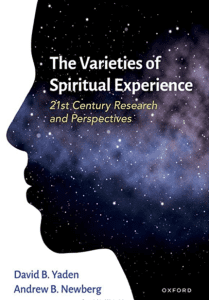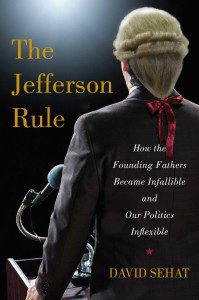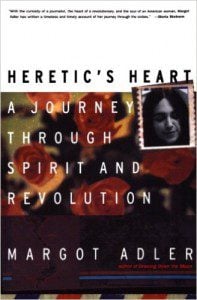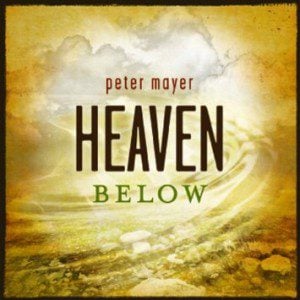There’s a man I’d like to tell you about — a man named Hermann Gunkel. But before I tell you about him, I would like to tell you about two groups that I also wish could meet Mr. Gunkel.
The first group to whom I’d like to introduce Mr. Gunkel is conservative Christians. I spent a lot of time in my childhood in conservative Christian congregations, and there was much emphasis on belief — believing doctrines on Good Friday such as the “necessity and efficacy of the substitutionary atonement.” Or believing doctrines on Easter such as the literal “bodily resurrection.”
A frequent defense of these doctrines is “oral tradition.” I frequently heard that we know these claims about Jesus are true because they were passed through oral tradition. But it is not true historically that pre-modern people had a specially honed talent of passing down memorized oral stories without altering them. Both then and now we find that rumors, lies, and embellishment are interspersed with good intentions, fact-checking, and evidence-based thinking. We need only look to the recent 10th Anniversary of the War in Iraq to see a contemporary example of how widespread and long-lasting the consequences can be of misinformation. For all these reasons and more, I am suspect of the argument of “oral tradition” as a defense for belief in what did (or did not) happened on third day after Jesus’ crucifixion.
A second group I would like to introduce to Hermann Gunkel are sometimes known as mythicists — those who hold the belief not only that the resurrection story is a myth, but also that the historical Jesus himself is a myth: that Jesus never existed. One advantage of being a Unitarian Universalist is that if it were somehow proved that the historical Jesus never existed — that his whole life was fabricated — I would find that revelation to be surprising and fascinating, but not devastating. However, my understanding from reading current scholarship is that it is extremely unlikely that Jesus never existed.
I can, however, see the appeal of mythicism. For individuals and groups that are weary of conservative Christians denying evolution, denying the age of the universe, denying climate change, denying the equality of woman, the legitimacy of same-sex marriage, or the need for comprehensive sex education — for such individuals and groups who are fed-up with conservative Christians denying evidence-based thinking, how delicious is the prospect of being able to say not only that the resurrection never happened historically, but also that Jesus never existed!
Now, I’ll get to Hermann Gunkel shortly, but to say more about my skepticism toward the mythicists, first I would like to introduce you
to Jonathan Z. Smith, who is a distinguished religion scholar at the University of Chicago. One of my passions is trying to bridge the academy and the local congregation. Too often scholars only write for one another, and the latest scholarship doesn’t always reach the general public. Fortunately, Unitarian Universalists tend to be among the groups most open to the latest scholarly breakthroughs. And regarding the resurrection stories of Jesus, J. Z. Smith’s work is an interesting study in the difference between cutting-edge scholarship and general public knowledge.
To oversimplify for the sake of time, much of the misinformation of the historical Jesus himself being only a myth is rooted in James Frazer’s 1890 book The Golden Bough, which helped popularize the idea that the story of Jesus’ resurrection is derivative of preexisting pagan myths of gods dying and rising back to life. Later interpreters then extrapolated from there that the whole Jesus narrative did not have any more grounding in historical reality than the tales of Egyptian, Roman, or Greek gods.
But J.Z. Smith did what scholars at their best do: a close reading of what our best historical records actually say, in contrast to what we think these texts say or what we have been told the texts say. And I can attest from my own reading of Smith’s scholarship that he is nothing if not meticulous. My strongest impression of his work is that approximately half of each page of his essays are dominated by extensive footnotes.
But the upshot is that Smith read Frazer’s book closely as well as the original texts about gods such as Adonis, Baal, Attis, Marduk, Osiris, and Tummuz or Dumuzi — especially the ones that predated the first-century dates of the historical Jesus, and he concluded that:
The category of dying and rising gods, once a major topic of scholarly investigation, must be understood to have been largely a misnomer based on imaginative reconstructions and exceedingly late or highly ambiguous texts…. All the deities that have been identified as belonging to the class of dying and rising deities can be subsumed under the two larger classes of disappearing deities or dying deities. In the first case the deities return but have not died; in the second case the gods die but do not return. There is no unambiguous instance in the history of religions of a dying and rising deity.
To take only the common example of Osiris, he does not “return to life. Instead he becomes the powerful ruler of the idea in the underworld.” It seems that, “The idea of Jesus’s resurrection did not derive from pagan notions of a god simply being reanimated. It derived from Jewish notions of resurrection as an [end-times] event in which God would reassert…control over this world.”
Smith’s position has been widely accepted in scholarly circles since he first published his research back in 1987. So, yes, there are strong resonances between pagan themes of spring (new birth, new life) and the Resurrection. But it’s more likely that Easter came to be celebrated in the spring to compete and coincide with the Jewish celebration of Passover than to compete and coincide with pagan spring rituals.
It’s relatedly unhelpful to overemphasize that the word Easter derives from the name of the pagan goddess Oestre. While that’s true, the etymological link has to do with the Germanic influence on English. If we were in Germany on Easter morning, you’d be hearing “Frohe Ostern!” instead of “Happy Easter!” You can hear the common etymology in the goddess Oestre, the German Ostern and the English Easter. (You can see the same link in Osten, the German word for “East.”) But in most other European countries you’d be much more likely to hear an Easter greeting that is related to the Latin word Pascha, which is from the Hebrew Pesach, which means “Passover.”:
|
|
|
|
|
|
|
|
|
|
|
|
|
|
|
|
Now, having spent some time contesting both the overemphasis on oral tradition that some conservative Christians use to say that the resurrection accounts have to be true and having discredited (at least partially) the case that the historical Jesus is merely a made up fable derived from pagan myths, I would like to more formally introduce you to Mr. Hermann Gunkel by way of inviting you to consider a way of viewing oral tradition that is more in line with modern scholarship.
Hermann Gunkel (1862-1932) was a German biblical scholar who entered a world of biblical scholarship in which the primary interpretative approach was called Source Criticism. Source critics sought to discern what written sources the biblical authors and editors had on their desks when compiling the various books that were eventually collected into the anthology we call the Bible. Following that common human urge to surpass one’s predecessors, Gunkel challenged biblical scholars to push farther behind the text, past written sources to the oral traditionthat preceded any written sources.
The name ‘Form Criticism’ alludes to the forms (or genres) in which units of oral history would have circulated: parables, aphorisms, controversy stories, healing narratives, exorcism tales, natural wonders, calling scenarios, and commissioning scenes among others. Various versions of these forms would have been in circulation until they were eventually written down.
It’s hard to overemphasize how much a difference this paradigm shift made in biblical studies. Instead of the previous emphasis on the final form of the biblical text that we have inherited, Gunkel and his successors invite us to consider what the biblical stories might have looked like as they circulated independently before being written down.
I know these details may seem a bit nerdy, but learning to read the Bible and other ancient texts with tools like Form Criticism can be transformative. It’s almost magical when you are accustomed to reading the Bible in a straightforward, traditional way and suddenly you begin to see the text come apart at the seams, and you begin to visualize the free-floating units of oral tradition. It’s akin to that scene of pulling back the curtain in the Wizard of Oz. Mythicists claim that you pull back the curtain, and there’s nothing there. But the Form Critics invite us to see that behind the curtain is not ‘nothing,’ but instead a very human wizard. And the studying those very human wizards behind the Bible is what Form Criticism can equip you to do.
And as scholars studied oral history of all types, perhaps the most crucial discovery was that in most cases there is no ‘original’ version to find. For example, Jesus would have most likely told the various parables many different times, in many different locations, all in slightly (or significantly) different ways based on the audience at hand. Similarly, Jesus followers would have told stories about Jesus many different times, in many different locations, all in slightly (or significantly) different ways based on the audience at hand. And Jesus’ followers would have grouped together his teachings and the events of his life in different ways based on the needs of the gathering or text at hand. Indeed that’s precisely what happened with the four canonical Gospels of Matthew, Mark, Luke, and John. Each of these books gather those independently circulating forms of Jesus material — parables, aphorisms, controversy stories, healing narratives, exorcism tales, natural wonders, calling scenarios, and commissioning scenes — and collect them in different ways based on the needs of the community of which Matthew, Mark, Luke, and John respectively were a part. As a contemporary example, think of political stump speeches in which politicians weave together and interchange various elements of an ever-evolving speech, depending on the audience. Or think of a Bob Dylan (another master or the oral tradition), who subtly plays with and interchanges lyrics based on the occasion and audience.
The important point is that when the stories Jesus told and the stories later told about Jesus were written down, they lost their original fluidity. For example, a parable in the oral tradition could be adjusted based on the circumstances, but once written down, that finalized form was often seen to apply to all audiences in all places and at all times. To give a more specific example, the historical Jesus scholar John Dominic Crossan likes to points out that if you were to read aloud the parable of the Good Samaritan from Luke 10 — even reading it slowly and with enunciation — it would be unlikely to take you more than 60 seconds. But he cautions that we make a common, but significant mistake if we imagine that Jesus would have taken a minute or less to tell parables. The version of the Good Samaritan parable that runs for eight verse in Luke 10 is less than 200 words. That’s approximately the length of many newspaper Letters to the Editor. Crossan says that we need to learn to see the parables in the Bible as “written plot summar[ies], not transcripts of an ‘oral performance.’” If you look closely at Luke’s version, you’ll notice that word ‘Samaritan’ only occurs once in the entire parable: “Had Jesus told it like that, a cough from the audience could have ruined the key word.”
To view a comedic sketch of what it might have looked like for Jesus’s parables to have been interrupted, watch this hilarious two-minute video from That Mitchell and Webb Look:
https://www.youtube.com/watch?v=5-nh7xOjkSs
Likewise, consider the version of Jesus “Sermon on the Mount” from Monty Python film The Life of Brian in which a distracted bystander mishears Jesus’ teaching “Blessed are the Peacemakers” as “Blessed are the Cheesemakers.” A debate then breaks out between an incredulous person who asks, “What’s so special about the cheesemakers?” to which another person retorts, “Well, obviously it’s not meant to be taken literally. It refers to any manufacturer of dairy products.” To view this scene, see:
https://www.youtube.com/watch?v=-xLUEMj6cwA
To avoid this precise problem, Crossan says, based on his study of oral tradition that, “an oral audience would have interrupted [Jesus] with question and objections, comments and disagreements.” Instead of the 30-second version of the Good Samaritan parable found in the Gospel of Luke, Crossan writes, “Give Jesus and hour, not just a minute for that story.” After all, they didn’t have cable or the Internet back then!
There’s a lot more to be said about Form Criticism, the oral history of stories Jesus told, and the oral history of stories told about Jesus, but for now, I want to skip to a question John Dominic Crossan asks about the oral history of the Resurrection accounts: “How Many Years Was Easter Sunday?” With this question, he means to problematize any claims that there were first-person witnesses of a bodily resurrection that then passed on essentially unchanged from person-to-person and group-to-group until they were written down verbatim in the Gospels, and then read (essentially unchanged) to today. Instead, he invites us to consider that Easter Sunday was many years in the making. Both for the date of Easter (which seems not to have been set until at least a full century after Jesus’ death) and for the stories about Jesus’ resurrection which were formed in the telling and retelling. Just as people today have what they claim as very real visions and experiences with loved ones after their loved ones have died, there are many theories about how similar experiences led — in the telling and retelling — to the written versions of the Resurrection accounts we find in the Bible.
There’s a lot more to be said too about adjudicating between the various theories of how the Resurrection accounts originated, but for now I want to return to a point I made at the beginning about the amount of time that has been spent (and the amount of ink that has been spilled) defended the veracity of the bodily resurrection of Jesus. And although it matters what people believe, what matters much more is what people do, not just what they claim to believe. We Unitarian Universalists have a shorthand motto for this distinction, we say that, we value “Deeds not creeds.” Or similarly, you’ll hear UUs say, “We don’t have to believe alike to love alike.”
Along these lines, I made a distinction last week between creed (which emphasizes “we believe”) and covenant (which emphasizes that around which “we unite” — in the sense that unity doesn’t have to mean uniformity). And I have almost no interest in counting the number of people around the world who would be willing, without crossing their fingers, to recite the part of the Nicene Creed that says, “On the third day he rose again in accordance with…..” In contrast, what would it mean to consider the Easter story from the standpoint of “Deeds not creeds?” What would it mean not to believe in the Resurrection, but to, in the words of Wendell Berry, “practice resurrection.”
I want to leave you with a similar sentiment from theologian Peter Rollins, who has a powerful monologue in which he speaks to what it might looks like to practice — or fail to practice — resurrection. Rollins begins with an assertion that he knows will shock his audience, which in his case were all practicing Christians. He says:
Without equivocation or hesitation I fully and completely admit that I deny the resurrection of Christ. This is something that anyone who knows me could tell you, and I am not afraid to say it publicly, no matter what some people may think. I deny the resurrection of Christ every time I do not serve at the feet of the oppressed, each day that I turn my back on the poor; I deny the resurrection of Christ when I close my ears to the cries of the downtrodden and lend my support to an unjust and corrupt system. However there are moments when I affirm that resurrection, few and far between as they are. I affirm it when I stand up for those who are forced to live on their knees, when I speak for those who have had their tongues torn out, when I cry for those who have no more tears left to shed.
Accordingly, let me say for the record I am not concerned if you believe in the resurrection. But I challenge you to practice resurrection.
What within you aches to be reborn?
Who around you desperately needs renewed hope, a new word of encouragement, a new perspective, a new lease on life?
Or as Wendell Berry wrote prophetically in his poem “Manifesto: The Mad Farmer Liberation Front“:
every day do something that won’t compute…. Love someone who does not deserve it. Denounce the government and embrace the flag. Hope to live in that free republic for which it stands…. Ask the questions that have no answers. Invest in the millennium. Plant sequoias. Say that your main crop is the forest that you did not plant, that you will not live to harvest. Say that the leaves are harvested when they have rotted into the mold. Call that profit. Prophesy such returns. Put your faith in the two inches of humus that will build under the trees every thousand years…. Practice resurrection.
Notes
1 Wendell Berry, “Manifesto: The Mad Farmer Liberation Front,” The Selected Poems of Wendell Berry.
2 For more on Oral Tradition, see John Dominic Crossan, “Part II, Memory and Orality,” The Birth of Christianity : Discovering What Happened in the Years Immediately After the Execution of Jesus.
3 Jonathan Z. Smith, “Dying and Rising Gods,” Encyclopedia of Religion, 2nd ed., ed. Lindsay Jones (2005): 4:2535-40 (the block quote is from page 2535). See also Mark S. Smith, “The Death of ‘Dying and Rising God’ in the Biblical World: An Update, with Special Reference to Baal in the Baal Cycle,” Scandinavian Journal of the Old Testament 12 (1998): 257-313. For a more easily accessible, popularized version see Bart D. Ehrman’s book Did Jesus Exist?: The Historical Argument for Jesus of Nazareth.
4 “derived from Jewish notions of resurrection” — Ehrman, Did Jesus Exist, 226-230.
5 compete and coincide with the Jewish celebration of Passover — Paul Bradshaw, The Search for the Origins of Christian Worship: Sources and Methods for the Study of Early Liturgy, 179-182.
6 The language chart adapted is from http://www.cactuslanguagetraining.com/us/english/view/how-to-say-happy-easter-in-10-languages/.
7 Source Criticism — see Steven McKenzie and Stephen Haynes, To Each Its Own Meaning, Revised and Expanded: An Introduction to Biblical Criticisms and Their Application, 60.
8 “oral tradition” and “there is no ‘original’ version to find.” — see “Part II: Memory and Orality” in John Dominic Crossan, The Birth of Christianity : Discovering What Happened in the Years Immediately After the Execution of Jesus.
9 For more on Form Criticism, see Edgar V. McKnight, What Is Form Criticism? For more, see Paula Gooder,Searching for Meaning: An Introduction to Interpreting the New Testament.
10 “Give Jesus and hour, not just a minute for that story.” — John Dominic Crossan, The Power of Parable: How Fiction by Jesus Became Fiction about Jesus, 90.
11 Peter Rollins’ monologue can be found at http://peterrollins.net/?p=136 or watch a video of his performance at http://vimeo.com/19258866.
The Rev. Dr. Carl Gregg is a trained spiritual director, a D.Min. graduate of San Francisco Theological Seminary, and the minister of the Unitarian Universalist Congregation of Frederick, Maryland. Follow him on Facebook (facebook.com/carlgregg) and Twitter (@carlgregg).
Learn more about Unitarian Universalism:
http://www.uua.org/beliefs/principles/index.shtml












